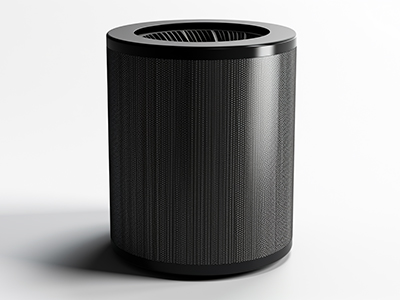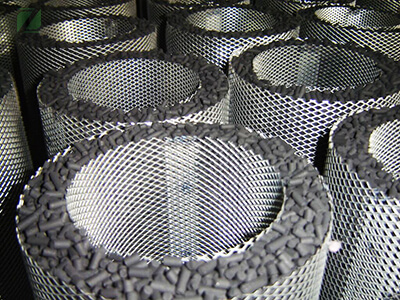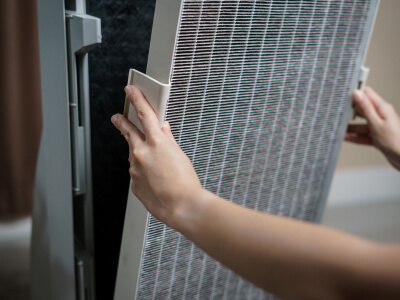
What is activated carbon air filter?
What is the purpose of activated carbon in a filter?
How long does activated carbon last in air filter?
What is the difference between HEPA and activated carbon?
What are the disadvantages of activated carbon filter?
How do you add activated carbon to a filter?
How much activated carbon needed for air filter?
What is activated carbon air filter?
Activated carbon air filter comprises several integral components that collectively work towards purifying indoor air. At its core lies activated carbon, a highly porous form of carbon derived from materials like coconut shells or wood, meticulously processed to create a vast surface area of interconnected pores. These microscopic pores serve as effective traps for a wide range of gaseous pollutants, odors, and volatile organic compounds (VOCs) present in the air. Typically housed within a frame or casing, the activated carbon acts as the primary filtration medium.
What is the purpose of activated carbon in a filter?
Activated carbon in filters serves to effectively adsorb impurities and contaminants from air or water due to its porous structure with a large surface area. As air or water passes through the filter, the activated carbon traps and holds molecules of various substances, including organic compounds, chemicals, odors, and pollutants, by adhering them to its surface. This adsorption process helps to purify and improve the quality of the filtered substance by removing impurities, making it a valuable component in filters used for air purification, water treatment, and various filtration systems.How long does activated carbon last in air filter?
The lifespan of activated carbon in an air filter can vary based on several factors, including usage, the concentration and types of contaminants in the air, and the quality of the activated carbon used in the filter. Generally, activated carbon filters have a finite lifespan and can last anywhere from a few months to a couple of years before they become saturated and lose their effectiveness in adsorbing impurities and odors. Manufacturers typically provide recommendations for the replacement intervals based on their specific filter models, and it's essential to follow these guidelines to ensure optimal filtration performance. Regular replacement or regeneration of activated carbon within the filter is necessary to maintain its efficiency in adsorbing airborne pollutants and maintaining air quality.
What is the difference between HEPA and activated carbon?

The primary difference between HEPA (High-Efficiency Particulate Air) filters and activated carbon filters lies in their distinct mechanisms of filtration. HEPA filters excel in capturing microscopic particles such as dust, allergens, pollen, and various airborne contaminants by physically trapping them within their dense fibers. Conversely, activated carbon filters are highly effective at adsorbing odors, gases, volatile organic compounds (VOCs), and certain chemicals through a chemical bonding process onto their porous surface. While HEPA filters focus on particulate matter, activated carbon filters target gases and odorous substances. Often, air purifiers employ both filter types in tandem to provide comprehensive air purification, combining the strengths of HEPA for particle removal and activated carbon for odor and gas adsorption.
What are the disadvantages of activated carbon filter?
Activated carbon air filters possess several drawbacks despite their effectiveness in removing various pollutants. Their main disadvantages include a limited capacity to capture larger particles and microorganisms, as the adsorption process primarily targets gases, odors, and volatile organic compounds (VOCs). Over time, these filters can become saturated, reducing their efficiency and necessitating regular replacement or regeneration. Moreover, while they excel in removing certain odors and chemicals, they might not eliminate all airborne contaminants, such as certain allergens or fine particulate matter, requiring supplementary filtration systems like HEPA filters for comprehensive air purification. Additionally, initial costs and ongoing maintenance expenses can be relatively high, impacting their long-term affordability for some users.
How do you add activated carbon to filter?

Adding activated carbon to a filter involves placing the carbon within the filter housing in a manner that ensures optimal contact with the airflow. Typically, manufacturers design filters with a compartment or chamber specifically designated for activated carbon. This compartment is situated within the filter assembly, allowing for easy access to add or replace the activated carbon. Users can often purchase activated carbon granules or pellets designed for their specific filter model and pour or place them into the designated carbon compartment. Once the activated carbon is added, it's essential to secure the filter properly, ensuring that the airflow passes through the carbon-filled section, allowing it to effectively adsorb impurities from the air or water passing through the filter.
How much activated carbon needed for air filter?
The quantity of activated carbon needed for an air filter depends on several factors, including the size and type of the filter, the intended purpose, and the level of adsorption required. Generally, air filters with activated carbon come with pre-determined amounts of carbon that are optimized for their specific filtration capacity. The amount of activated carbon is typically specified by the manufacturer based on the filter's design and intended function. Users should follow the manufacturer's recommendations regarding the quantity of activated carbon needed for their particular filter model to ensure optimal performance. If replacement carbon is required, it's advisable to use the specified amount suggested by the manufacturer to maintain the filter's effectiveness in adsorbing impurities and odors from the air.

